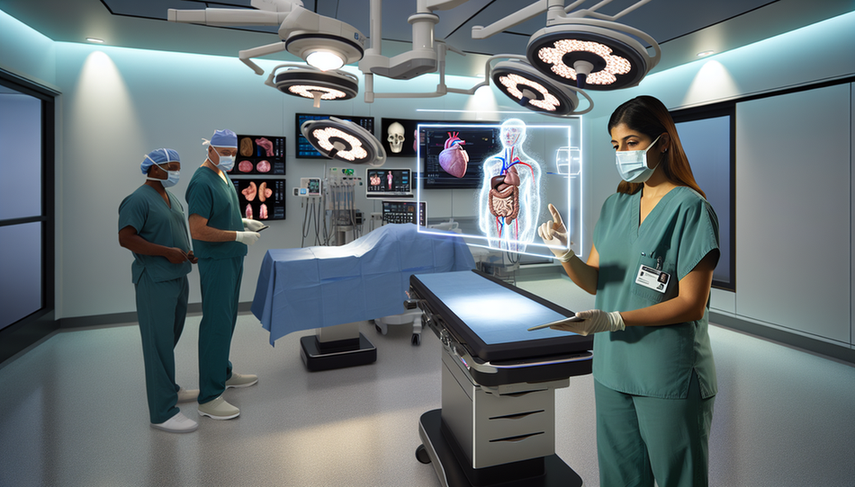Enhancing the Surgical Learning Curve with AI: Simulations and Augmented Reality in Surgical Training

The surgical learning curve presents a constant challenge in the training of new surgeons. The complexity of surgical techniques and the need for precision demand effective and safe training methods. In this context, artificial intelligence (AI) and augmented reality (AR) are emerging as revolutionary tools to enhance surgical simulations and virtual training.
Innovations in Surgical Training
The use of AI in surgical training is transforming how surgeons acquire skills. An example of this is the development of a laparoscopic trainer based on open-source hardware and AI algorithms. This system utilizes computer vision and AR to objectively assess surgical psychomotor skills, allowing students to improve their dexterity and confidence.
On the other hand, high-fidelity simulation is also gaining traction. The TNS Box model for transsphenoidal endoscopic surgery has proven to be a valuable tool for shortening the learning curve in neurosurgery. This model not only validates the technique but also offers the possibility of integrating complementary technologies such as AI and AR to further enhance the learning experience.
Moreover, telestration with augmented reality has shown to significantly improve student performance in laparoscopic procedures. By providing interactive visual instructions, it reduces complication rates and enhances understanding of surgical techniques.
Conclusions
The integration of AI and AR in surgical training offers significant potential to improve the surgical learning curve. These technologies not only provide a safe environment for practice but also allow for objective and personalized assessment of skills. As these tools continue to evolve, we are likely to witness a transformation in how surgeons are trained, making virtual training more accessible and effective.
Referencias
- [1] Development of a Laparoscopic Box Trainer Based on Open Source Hardware and Artificial Intelligence for Objective Assessment of Surgical Psychomotor Skills.
- [2] High fidelity simulation of the endoscopic transsphenoidal approach: Validation of the UpSurgeOn TNS Box.
- [3] Telestration with augmented reality improves the performance of the first ten ex vivo porcine laparoscopic cholecystectomies: a randomized controlled study.
Created 20/1/2025
